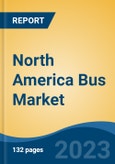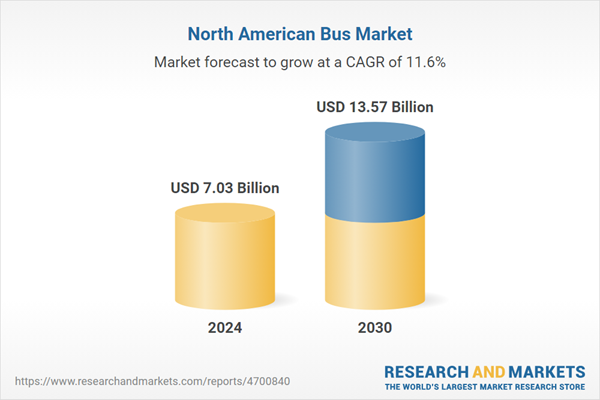Speak directly to the analyst to clarify any post sales queries you may have.
10% Free customizationThis report comes with 10% free customization, enabling you to add data that meets your specific business needs.
Urban populations continue expanding, straining transportation systems and increasing demand for efficient public mobility solutions. According to the U.S. Department of Transportation, public transit ridership rose by 7.5% in 2024, emphasizing buses as vital urban connectors. Simultaneously, the U.S. Environmental Protection Agency highlights that transportation contributes nearly 29% of national greenhouse gas emissions, driving legislative push for cleaner fleets. Advancements in battery technology and charging infrastructure further support electric bus adoption, while digitalization fuels innovations in passenger experience and fleet management.
Rising federal and state incentives stimulate adoption of low-emission and zero-emission buses. The U.S. Federal Transit Administration allocated over USD 1.6 billion in grants during 2024 to modernize transit fleets, improving accessibility and reducing pollution. Growing emphasis on school bus safety standards, coupled with heightened environmental awareness among districts and municipalities, drives replacement of older diesel vehicles. Transit authorities invest in smarter solutions, integrating telematics and real-time tracking, driven by the American Public Transportation Association’s data indicating over 20% increase in smart fleet deployments between 2023 and 2024.
High upfront costs of electric buses remain a significant hurdle, despite long-term savings. Infrastructure development challenges hinder widespread charging network rollouts. Complex emission standards require costly compliance strategies, burdening smaller operators. Bus operators face fluctuating fuel prices and labor shortages, as reported by the Bureau of Labor Statistics, where driver shortfalls rose by 6.3% in 2024. Market fragmentation limits economies of scale, while evolving passenger expectations demand continual technological upgrades, testing operators’ financial resilience and adaptation capacities.
Market Drivers
Emission Regulations Fueling Clean Fleet Adoption
The growing regulatory pressure to reduce greenhouse gas emissions propels bus operators toward cleaner propulsion systems. The U.S. Environmental Protection Agency’s greenhouse gas inventory indicates transportation accounts for nearly 29% of emissions, spurring laws mandating lower emissions. Funding programs like the Federal Transit Administration’s Low-No Emission Vehicle Program channel significant investments into electrification and alternative fuels. Fleet operators respond to evolving compliance requirements, aiming to reduce carbon footprints while enhancing operational efficiency. Environmental mandates thus shape procurement decisions and technological advancements across transit, coach, and school bus segments, fostering industry-wide shifts toward sustainable fleet transformations.Key Market Challenges
High Upfront Costs of Electric Buses
While electric buses offer lower operating costs over time, initial acquisition prices remain substantially higher than conventional diesel models. Battery packs, power electronics, and charging infrastructure contribute to significant capital expenses. Smaller operators, in particular, face financial constraints in transitioning fleets. Government incentives help mitigate costs, but gaps remain, slowing adoption rates. According to the U.S. Department of Energy, electric buses can cost 50-100% more upfront than diesel equivalents. This cost barrier affects procurement cycles, delaying modernization and sustainability goals, and posing challenges to achieving widespread electrification across the market.Key Market Trends
Integration of Smart Fleet Technologies
Operators increasingly deploy smart technologies like telematics, predictive maintenance, and real-time tracking to boost efficiency. Systems enable precise diagnostics, reducing unplanned downtime and extending vehicle lifespan. Smart ticketing and passenger apps enhance service reliability and customer satisfaction. According to the American Public Transportation Association, smart fleet deployments rose over 20% between 2023 and 2024. Connectivity allows seamless integration into urban transport networks, supporting multimodal mobility goals. The trend drives cost savings, sustainability, and improved decision-making, signaling a pivotal shift in how fleets are managed and services delivered across all bus segments, including transit, coach, and school operations.Key Market Players
- Mercedes-Benz AG (Daimler AG)
- IVECO S.p.A.
- MAN Truck & Bus SE
- Scania AB
- AB Volvo
- BYD CO. Ltd.
- Lion Electric Company
- NFI Group Inc.
- Proterra Inc.
- Gilling LLC
Report Scope:
In this report, the North America Bus Market has been segmented into the following categories, in addition to the industry trends which have also been detailed below:North America Bus Market, By Application:
- Transit Buses
- Motor Coaches
- School Buses
- Others
North America Bus Market, By Length:
- 6-8m
- 8-10m
- 10-12m
- Above 12m
North America Bus Market, By Seating:
- 15-30
- 30-40
- 40-50
- Above 50
North America Bus Market, By Fuel:
- Diesel
- Electric
- Others
North America Bus Market, By Country:
- United States
- Canada
- Mexico
Competitive Landscape
Company Profiles: Detailed analysis of the major companies present in the North America Bus Market.Available Customizations:
North America Bus Market report with the given market data, TechSci Research, offers customizations according to the company’s specific needs. The following customization options are available for the report.Company Information
- Detailed analysis and profiling of additional market players (up to five).
Table of Contents
Companies Mentioned
- Mercedes-Benz AG (Daimler AG)
- IVECO S.p.A.
- MAN Truck & Bus SE
- Scania AB
- AB Volvo
- BYD CO. Ltd.
- Lion Electric Company
- NFI Group Inc.
- Proterra Inc.
- Gilling LLC
Table Information
| Report Attribute | Details |
|---|---|
| No. of Pages | 130 |
| Published | August 2025 |
| Forecast Period | 2024 - 2030 |
| Estimated Market Value ( USD | $ 7.03 Billion |
| Forecasted Market Value ( USD | $ 13.57 Billion |
| Compound Annual Growth Rate | 11.5% |
| Regions Covered | North America |
| No. of Companies Mentioned | 10 |









